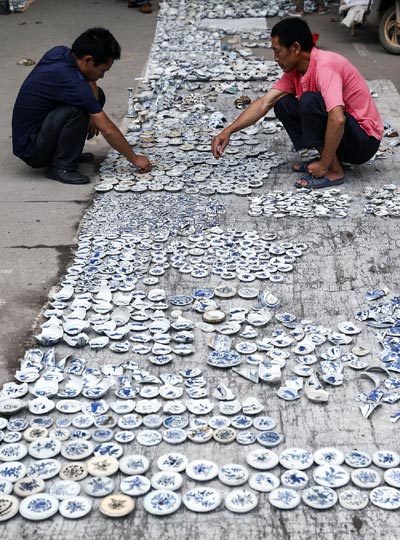 |
|
At the antiques market in Jingdezhen, Jiangxi province. The market opens every Monday morning around 4 am, and is one of the largest of its kind in the city. Zhang Hao / China Daily
|
Li said a large number of foreign potters have settled in the city in the past decade, and the area around Sanbao boasts more than 100 foreign-owned ceramic studios.
"Jingdezhen is a hub for ceramicarts," Li said. "Artists have access to every material they could want, and by communicating with the world-class artists here, people inspire each other. That's why we have great works in Jingdezhen."
Last year, the city's Ancient Kiln and Folk Customs Museum received 58 groups of foreign tourists, and 60 percent of overseas visitors to Jiangxi visited Jingdezhen's ancient kilns.
"I am delighted to see that the ancient pottery-making skills haven't died out," said Jerzy Mazur, who owns a ceramics studio in the United Kingdom.
For Lee Kyung-yoon, a 25-year-old Korean student at the Jingdezhen Ceramics Institute, the city is a perfect place to start his career.
"My father has been running a china store for more than 30 years in Icheon, the porcelain capital of South Korea. He said Jingdezhen is the most famous porcelain city in the world, and told me I must come here," he said.
Now Lee has become a sophisticated potter and is learning to make the blue and white porcelain for which Jingdezhen is famous. When he graduates, Lee, who enjoyspaintinglandscape views on his ceramic work, will help his father run the family business.
"Jingdezhen is a much smaller city than Beijing or Shanghai," he said. "But my father is happy that I'm studying here because there is no place to have fun, there's only ceramics, ceramics and more ceramics!"
